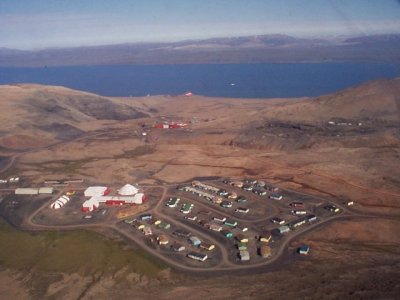On 8 August 2007,
CBC News reported documents from the
Canadian Forces showing plans to convert the site into a naval station. The plan was to turn the former mine's existing port into a deepwater facility at a cost of $60 million. On 10 August 2007, Prime Minister
Stephen Harper announced construction of a new docking and refuelling facility at Nanisivik for the Canadian Forces, in an effort to maintain a Canadian presence in
Arctic waters during the navigable season (June–October). The choice for Nanisivik as a site was partially based on its location within the eastern entrance to the
Northwest Passage, via
Admiralty Inlet, and the existence of a deep-water berthing facility at the site, as well as a location of the airport. The
United States Air Force's
Thule Air Base is 600 km (370 mi) to the northeast in Greenland.
On 20 August 2010, the
Kingston-class coastal defence vessel HMCS Goose Bay became the first Canadian warship to secure to the Nanisivik jetty as part of
Operation Nanook. Two days later, the frigate
HMCS Montréal secured alongside for a photo opportunity. The Coast Guard icebreaker
CCGS Henry Larsen was also present, but did not go alongside at that time.











